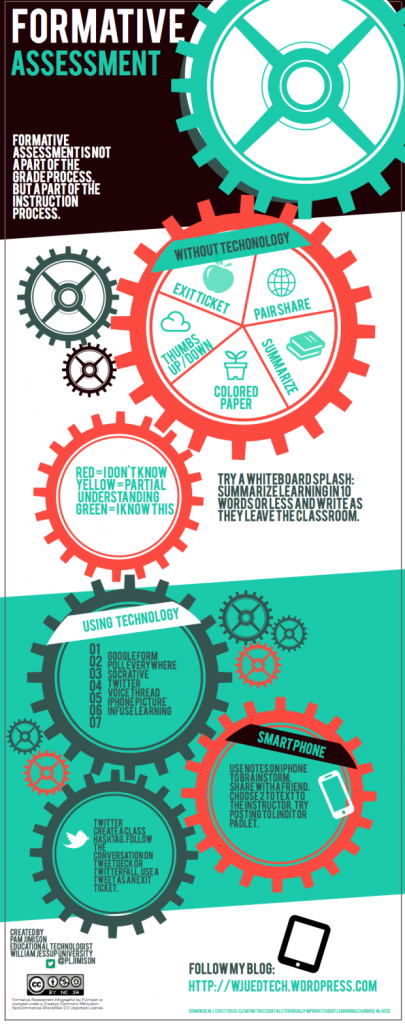 By Linda Dunnavant
By Linda Dunnavant
Science teachers have a tough job. Not only are they expected to teach complex concepts, but they also have to teach students how to apply these complex concepts to new situations. Science teachers can just stand in front of the class, lecture and hope that the students get it (also known as the “spray and pray” method), or they can try to meet students where they are in the learning process.
Enter formative assessment. Unlike assessments given at the end of a unit, formative assessments are quick checks for understanding that give teachers valuable insight into the minds of their students.
The key to a good formative assessment is that it is quick and easy, especially in the science classroom. There are mountains of content to cover, and there is simply no time to waste. Formative assessments can be given during the last few minutes of class, and the best part is that they don’t need to be graded. They simply exist to give teachers feedback about how well their students are learning.
Consider these tools:
Here are some tried and true formative assessment tools that all science teachers can use to better inform their teaching:
- Exit Slips: At the end of class, ask students a quick question that covers what they should have learned that day. For example, “Describe the relationship between density and whether or not an object floats.” Students can write their answers on a sticky note, index card, or just a paper scrap. You can then sort the exit slips into piles to see how many students got it, and how many students need more help to understand the concept. Here’s a great blog post from The Science Penguin about how to use exit slips in the science classroom.
Another option is for students to place their exit tickets in colored baskets according to their level of understanding. This also allows students to take it a step further and self-assess their understanding.

Image source: http://simplifyingradicals2.blogspot.com 1
- 3-2-1: After a lesson, students can list three things they learned, two things they found interesting, and one question they still have. This quick check for understanding gives you valuable insight on what your students need more help with as well as information on how to better tailor your lessons to their interests!
- Top Ten List: Our students may be too young to remember David Letterman’s top ten lists, but we can introduce them to the fun! Having students list their top ten things about gravity or cohesion—or whatever concept it is you’re teaching—allows students to show you what they’ve learned in a humorous and fun way.
- Color Cards: Giving each student a set of colored cards on a ring is a great quick, assessment tool. Students can hold up green if they feel they understand the concept well, yellow if they need you to slow down or need more explanation, and red if they are totally lost. This is especially a great idea because it requires no paper!

Image source: http://mrsjacobsclassroom.blogspot.com/2 1
- Twitter Post: Another great, paperless way to see what students know is to have them answer a short question on Twitter. Create a hashtag such as #whatiknowaboutcells to easily find and keep track of students’ answers. Another option is to use Instagram to have students take a photo that depicts something they’ve learned or a question they have. Students are already engaged with social media, so teachers might as well use it to their advantage!
- Misconception Check: Give students a common misconception about the topic you’re studying, and let them explain whether they agree or disagree. An example would be, “The sun goes down at night.” You can tell a lot about a student’s understanding of the solar system by their answer.
- What Is the Question to this Answer? Give students an answer, such as “conservation,” and have them come up with a question, Jeopardy style. This simple, quick exercise will let you know who grasps the concept and who needs further instruction. This activity is also a good discussion starter because students can explore their questions in small groups. It is amazing what a teacher can glean from just walking around the classroom and listening to students discuss amongst themselves!
So, there we have it: seven simple ways to formatively assess students in the science classroom. Do you currently use formative assessments? Are there any other formative assessments that you would recommend to teachers?
Additional Resources:
http://www.edutopia.org/resource/checking-understanding-download
Linda Dunnavant is a middle school teacher whose blog, “Tales of a Fifth Grade Teacher,” can be accessed here.

